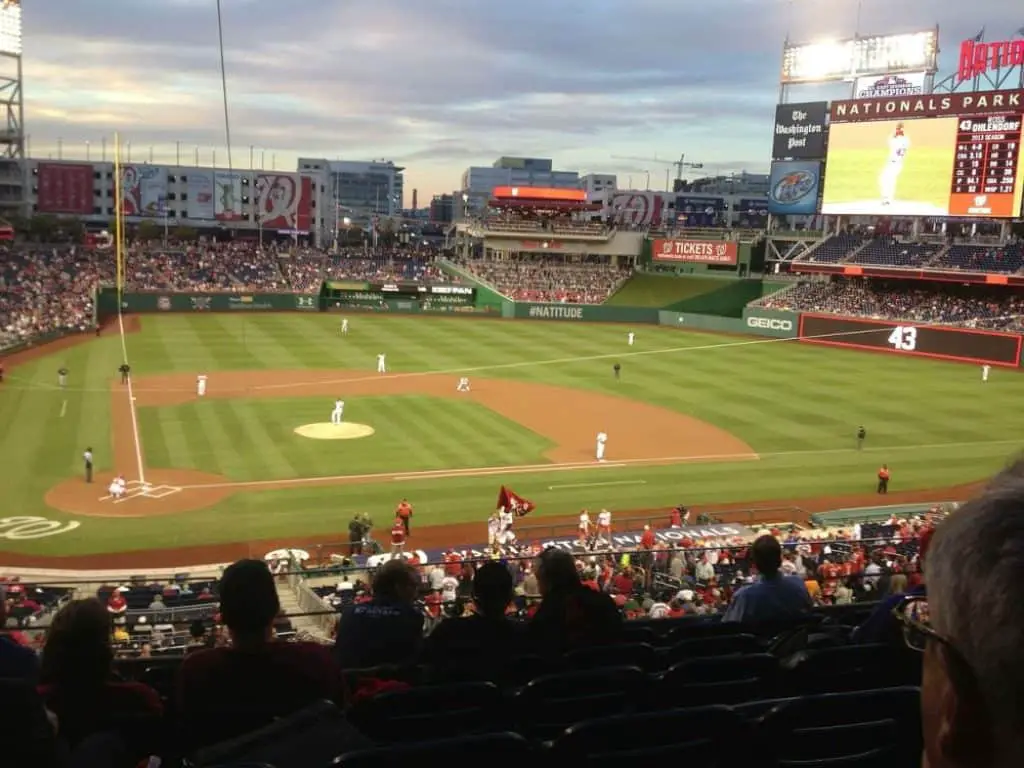How Many Games in MLB Season per Team?
Baseball is a game unlike any other. It holds a unique place in the world of sports and there are many differences that set it apart from other major sports.
One of the main things that make the game played on the diamond-shaped field so special is certainly the length of the season and the number of games each team gets to play every year.
Even if you’re not an avid baseball fan, you’ve probably noticed that, during the season, there’s a game on almost every day.
Unlike their counterparts playing other sports who commonly play one or two to three games a week at the most, baseball players take to the field nearly daily, and sometimes even twice on the same day.
Below, you’ll learn how many games in MLB season per team are played each year and why the league has settled on that exact number.
Table of Contents
How Many Games in MLB Season per Team?
During a regular MLB season, which commonly lasts from late March or early April to late September or early October, each team in the league plays 162 games.
This means that 30 teams that form American League and National League play 2,430 games in total over the course of approximately six months.
There are some exceptions to this but they’re very rare and don’t occur every year.
Teams that make it to the playoffs will, of course, play even more games, depending on how deep their postseason run is.
The most games a team can play during the postseason is 22.
This would mean that that club has entered the playoffs and made it all the way to the World Series, with the maximum number of games in each series.
In addition, each team will play around 30 non-competitive games. These games take place before the season, during Spring Training.
How is the 162-Game MLB Schedule Structured?

A large number of games during a season and the travel concerns that come along with it mean that the schedule in the MLB is structured differently than in other major sports.
The regular season schedule revolves around series, meaning that teams will play each other in consecutive games over a couple of days, with each game at the same ballpark.
A series commonly involves three or four games, rarely two. This means that the schedule doesn’t include single, one-off, games between two teams.
Still, this may happen from time to time, but only in rare situations, such as making up for a postponed game.
In most cases, MLB teams are scheduled to play one series mid-week and one over the weekend.
Additionally, series a team plays away from home are usually grouped into a road trip consisting of multiple series, and home series are organized into a home stand.
When and Why did MLB Switch to 162 games?
The MLB regular reason didn’t always feature 162 games. For almost 60 years, from 1904 to 1964, each club in the Majors played 154 games over the course of one regular season.
However, it’s worth noting that in those times, the league had only 16 teams split into two divisions.
During the regular season, every team got to play 22 games against each of their 7 divisional rivals.
In 1961, the league started to expand, and the addition of the new teams made this format unsustainable, as it would mean that each team would play more than 200 games per season.
The league had to find a way to fix the schedule while retaining an optimal number of regular season games and a fair balance between the teams.
After much deliberation, the season was set at 162 games, with each team playing 18 games against teams in the same division.
Recent Changes to the 162-Game Format
In the following years, the league kept occasionally adding new teams.
This caused some changes to the way the schedule is structured, like the addition of inter-divisional games.
However, the total number of games remained at 162.
The latest changes, which will come into effect in the 2023 season alter the league format even further.
The 2023 season will be the first in history where every team will play against each of the remaining 29 teams in the league during the regular season.
This means that every club will play 46 interleague games compared to 20 of such matchups in the current schedule.
As the playoff field expanded to 14 teams in 2021, the league felt that leveling the schedule for all 30 teams will bring more parity to the league.
Plus, it should make the strength of a schedule less of a factor when deciding who goes to playoffs.
Do MLB Teams Always play 162 Games in the Regular Season?
While we established that 162 games per team are the standard, there are rare exceptions to this rule.
Sometimes a team will play fewer than 162 games.
The most common instance of this is when there’s a postponed game that is rescheduled to be played late in the season.
If, at that later time, the outcome of the game can’t have an impact on the final league standings, the team can decide not to play it, bringing their total number of regular season games to under 162.
There were also cases when teams played the 163rd game.
This used to happen when two teams were tied for a spot in the standings that lead to playoffs and would play a tie-breaker game to decide who goes to the postseason.
However, the latest CBA got rid of this rule and it will no longer be applied after the 2022 season.
Conclusion
The regular season is probably the most grueling competition in all the major sports.
Even though baseball is not as physically demanding as some other sports, playing 162 games in a year, plus the playoffs, is anything but easy.
However, while it may take some toll on players, fans probably wouldn’t have it any other way.
In addition, the large number of games provides plenty of material for all statisticians whose role is very important in baseball.
Plus, baseball is a game of tradition and changes are rarely welcomed, so the 162-game season is likely to be the format for the foreseeable future.




